Estimated reading time: 5 minutes
Capturing great photographs of animals on the move while on a photographic safari is surprisingly difficult. Here are a few fundamentals to improve your chances of capturing that one great shot.
1. Be familiar with your equipment
This is vital - knowing your gear and how to make the most of it will help you capture the moment when it arises. If you purchase a new camera before your safari, make sure you practice with it or take some lessons - you don't want to miss the action because you were fiddling with your settings!
Let's take look the focal modes available to you on modern cameras and how they can help you get that dream shot.
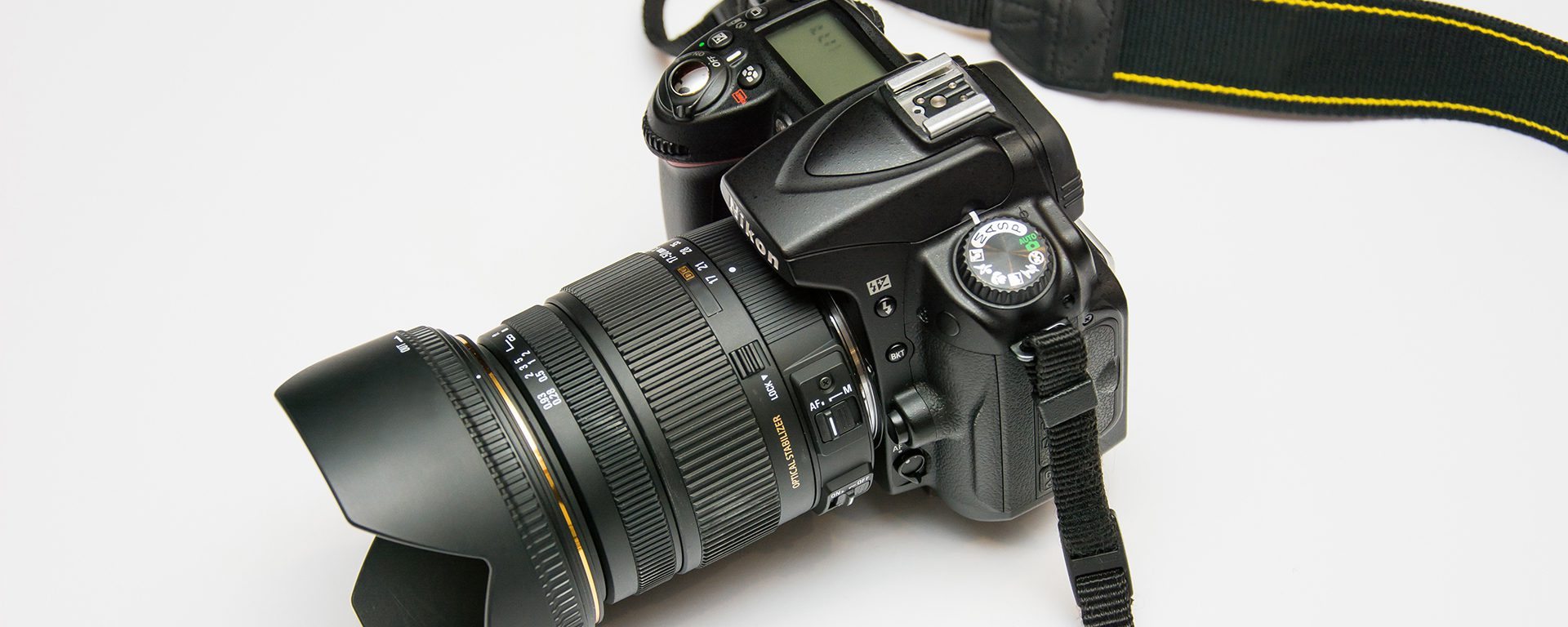
Take time to study your user manual and familiarise yourself with its autofocus settings.
The two principal settings that you need to know are ‘ONE SHOT’ and ‘AI SERVO’. These affect how your camera’s autofocus operates, specifically where and how it focuses before taking a picture. You should be familiar with the red dots or squares visible through your viewfinder, and how they light up to tell you where the camera is focusing and how to change the focal point quickly and smoothly.
If you are using the ONE SHOT setting, the focus remains set on the spot you’ve selected as long as you keep the shutter pressed. If your subject is moving, you will capture one image in focus and the rest blurred as the animal moves beyond the focal spot.
In AI SERVO mode, the camera recalibrates focus for every shot, which is particularly useful for moving subjects. It can be tricky to get used to but it ensures you capture far fewer out-of-focus images. You really need to dig into the AI SERVO menu to learn how to calibrate the speed and finesse with which the autofocus takes its readings.
Next, have your ISO, shutter speed and aperture settings prepared for the shot so that when things happen, you are ready. A moving subject needs a fast shutter speed, so adjust your aperture and ISO accordingly.
2. Be familiar with your subject
Your experienced safari guide uses years of knowledge and experience to put you in the right place at the right time. Often, this requires an enormous amount of patience – waiting in anticipation of a moment that is bound to come. Other times, it simply takes solid wilderness skills, like off-road driving. Knowing where an animal is most likely to be and how it is most likely to behave is the high art of the best guides. The more accurately you can predict an animal or bird’s behaviour, the better your photos will be (of course, this will take more than one safari to learn!)
I’ll discuss the techniques and circumstances in the images:
Lion pride
This pride of lions (see main image at the top of this blog) had been sleeping through the heat of the day in the shade. We positioned our vehicle between them and the closest water source (a narrow and deep ditch impossible to approach for photography) and waited for them to come along. I like the image as it shows a large pride on the move and in the open, which is unusual. The only drawback is the sun was behind them but you can’t have everything!
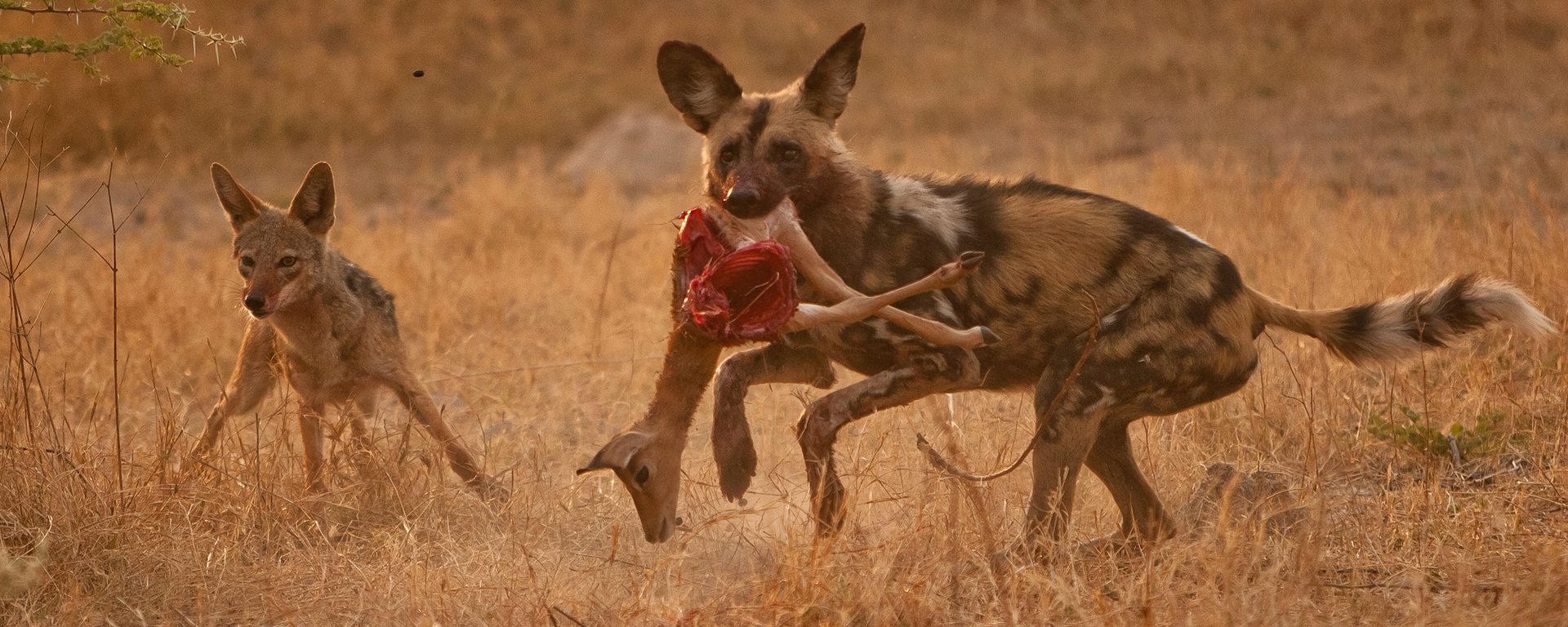
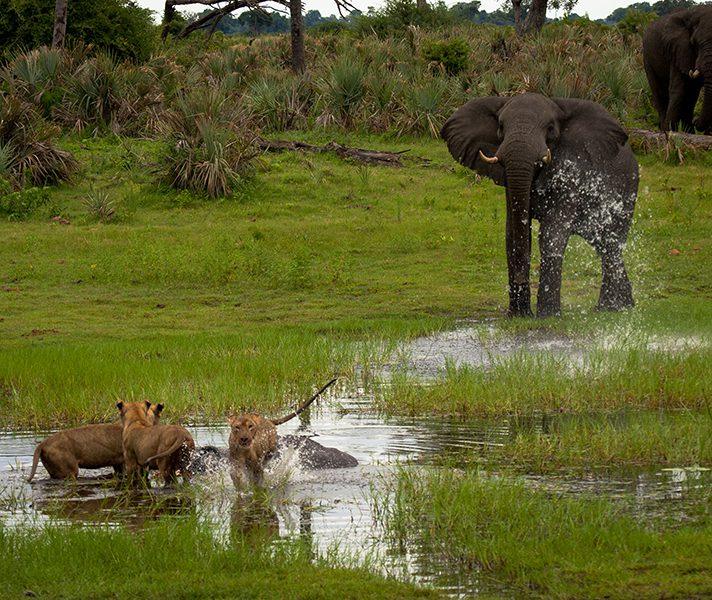
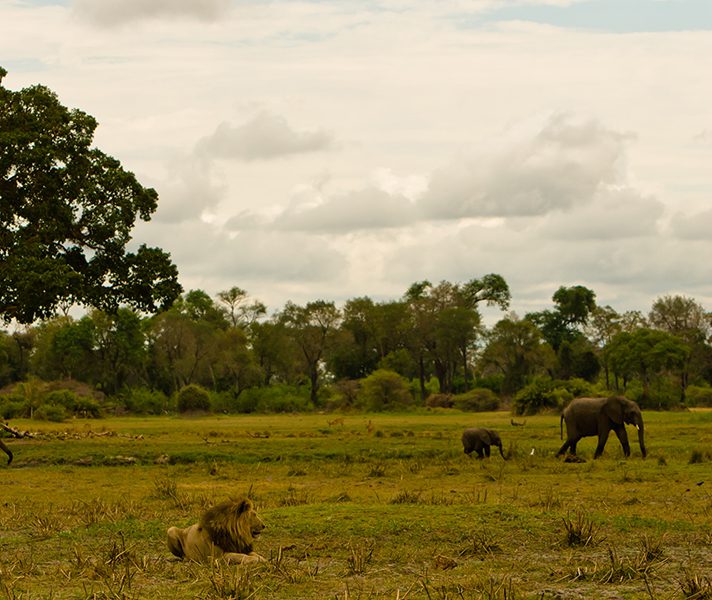
Wild dog and jackal
While making a documentary film about an extraordinary wild dog female that had adopted a family of jackals, we lacked the essential ‘kill’ footage. This was due to the tremendous speed with which she would hunt through very difficult, densely vegetated terrain. This photo was the result of a high-speed chase and getting into position between the kill and the jackals’ den, which was some distance away. We knew she would run in that direction and this image is the result of being ready when it counted.
Lions and elephants
These lions were on a buffalo they had killed, in a flooded plain in the Okavango Delta. When I saw two bull elephants in the distance, I knew a confrontation might happen, so positioned myself at a distance to get some elevation. I adjusted my aperture to get depth of field, and my ISO higher to ensure a fast shutter speed to capture the lion jumping and the spray of water behind her.
Elephants and male lion
The green strip in the near background (see above photo) is the channel we got stuck in and had to winch our vehicle out of! We had seen the lions on the other side of the water, and had found the elephants moving that way about a kilometre from the channel. Anticipating a shot with lion and elephants in one frame, we raced to a shallow part of the channel upstream, crossed with minor difficulty and made it in time to capture this image.
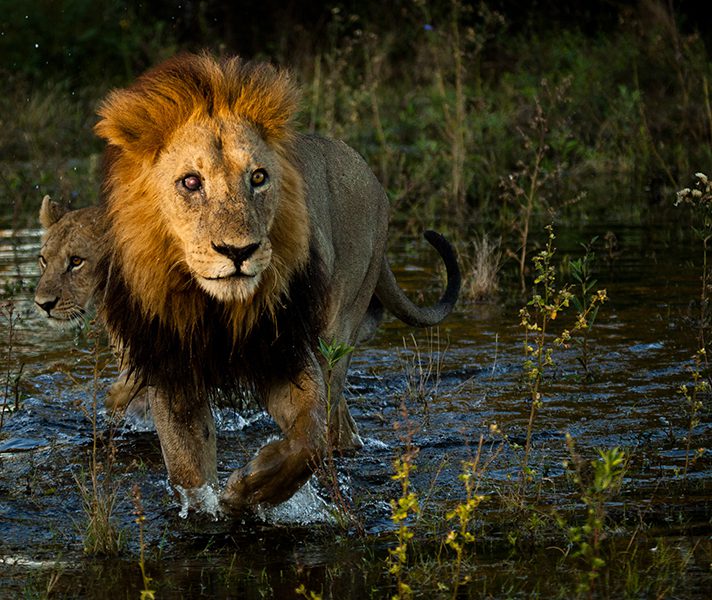
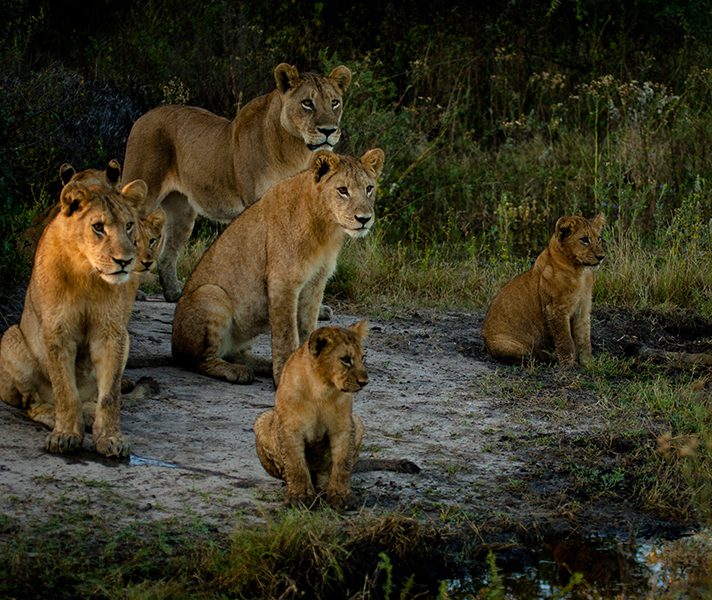
Lion in water
It is unusual to see cats in water but in the Okavango it is a fairly common occurrence because they have adapted to hunting on the floodplains. Managing to photograph it, however, is very difficult! The main pride was far ahead of this male, who was following in his own time. After we saw the pride crossing and didn’t manage to get decent photos, as we weren’t in the right spot, we waited for this old boy. He crossed just as the rising sun gave us this perfect light on his face.
Waiting pride
Here was our clue that the male lion was on his way before we could even see him!
Using a blend of bush skills, anticipation and patience along with knowing exactly what your camera is capable of will allow you to capture that perfect moment, when both you and the animals are on the move. Good luck!
